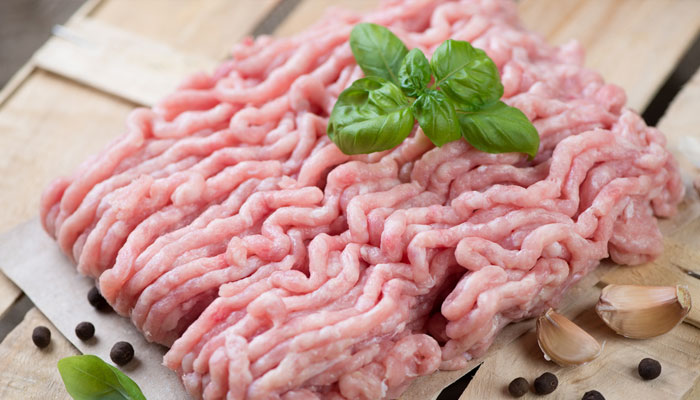Shutterstock
With only one week before Thanksgiving, the US Department of agriculture issued a recall on Thursday for 91,388 pounds of Jennie-O-Turkey raw ground turkey products.
The brand was linked to a salmonella outbreak.

USDA inspection on samples of Jennie-O Turkey raw ground turkey products tested positive for salmonella and matched that of a known outbreak strain. The agency said that the samples were from a September 11, 2018 production, which shipped nationwide.
A unit of the USDA, the Food Safety and Inspection Service (FSIS) is “continuing to investigate illnesses associated with this widespread outbreak, and additional product from other companies may also be recalled.”
The US Centers for Disease Control and Prevention (CDC) linked a salmonella outbreak to raw turkey products in July. Last week the agency said that the outbreak has been going on for a year, dated to November 2017, and they are unclear where the outbreak originated from.
At least one person has died, 63 people have been hospitalized, and at least 164 people in 35 states have been sickened by the salmonella outbreak.
The CDC has advised that salmonella, as well as other food-borne germs, can be destroyed by cooking turkey and other meats thoroughly.
A recent tweet by the CDC advised people to thought their Thanksgiving turkeys “in the fridge, NOT on the counter.”
The general rule of thumb is this: For each of five pounds of the bird’s weight, allow 24 hours of in-refrigerator thawing. These are the days BEFORE you are going to roast the turkey. Do not count the day you are going to cook your turkey as part of your calculation.
To properly kill bacteria in turkey and other meats, it’s important to cook them thoroughly.
When it comes to cooking turkey, it’s essential to have a meat thermometer to ensure the internal temperature has reached the amount needed to kill bacteria.
Turkey needs to reach an internal temperature of 180°F to thoroughly kill bacteria such as salmonella. Further, you should also test the temperature of the stuffing inside the bird’s cavity, which should reach 165°F.
Lastly, oven temperature is important as well. A temperature of 325°F or higher is necessary to kill bacteria. Oven temperatures lower than 325°F will actually allow bacteria to multiply.